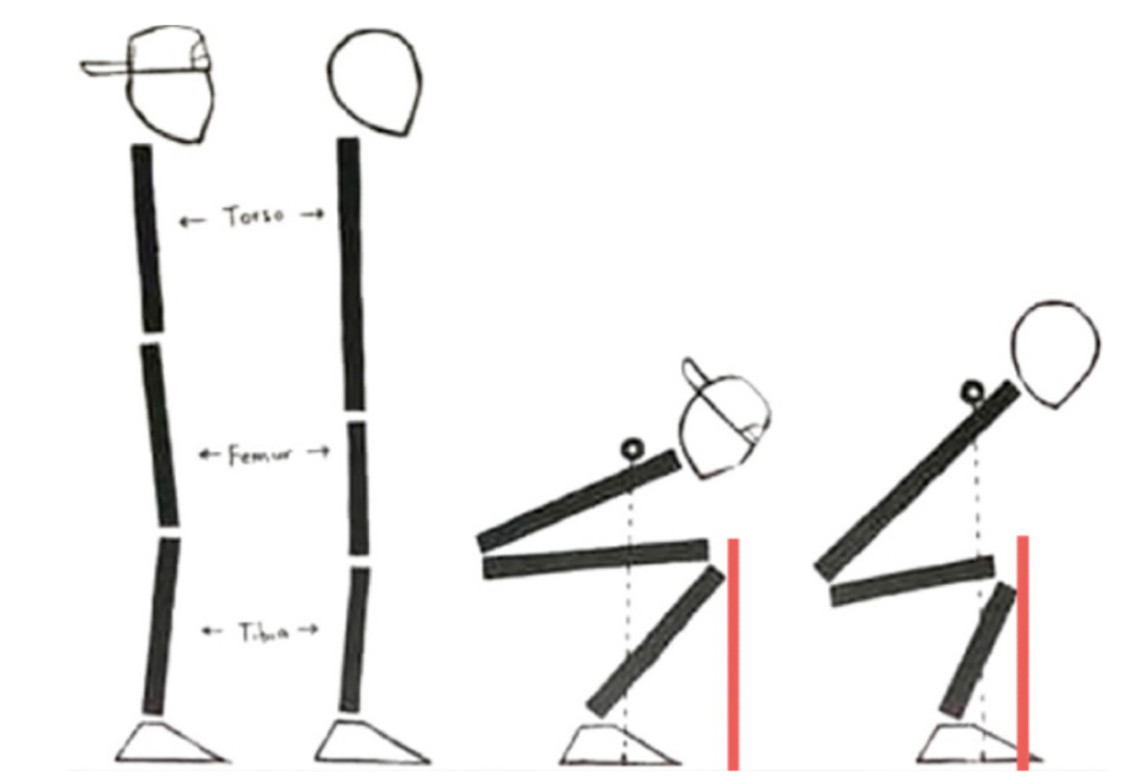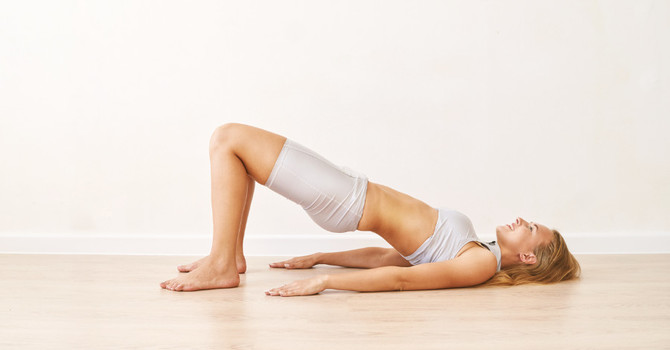
The length of your femurs (thigh bones) play an important role in how your squat might look in the gym. Those with longer femurs often experience more forward lean during the movement to maintain balance and keep the center of gravity over the midfoot. This lean can increase stress on the lower back and make achieving deep, upright squats more challenging. Conversely, individuals with shorter femurs tend to maintain a more vertical trunk position, allowing for deeper and more efficient squats with less forward lean. Check out the images below to get a better understanding of how this would look in practice. Notice how the stickman squatting on the left has much longer femurs even though both stickmen are the same height.
To accommodate femur length differences, lifters may need to adjust stance width, foot angle, and bar placement. For example:
A wider stance may help long-femured athletes reduce torso lean.
Long-femured athletes may prefer to place the barbell on the front of their shoulders to maintain better balance.
Placing something small under the heels may help long-femured athletes maintain better balance through the squat.
Understanding your unique anatomy is essential for optimizing squat form, maximizing performance, and reducing injury risk. Personalized technique, combined with mobility and strength training, can help every athlete squat more effectively, regardless of limb proportions. There are, of course, other factors that can affect squat depth and balance, such as spinal structure and ankle mobility which is why it’s best to have a consult with a professional. If you’re wondering about how to improve your squatting technique, a physiotherapist can help you identify strategies and tips to help achieve your personal goals!



